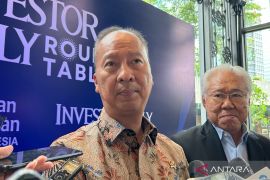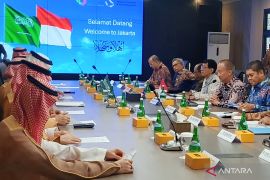"In addition, the shipping industry sector has a long backward and forward linkageJakarta (ANTARA) - The shipping industry is playing a role in making Indonesia the world's maritime axis, as conveyed by President Joko Widodo, Industry Minister Agus Gumiwang Kartasasmita said on Wednesday.
“Our job is to make Indonesia a strong and independent maritime country. Thus, synergy is needed in order to formulate policies and concrete measures for the development of the transportation sector and adequate marine infrastructure," he said in a statement here on Wednesday.
The minister delivered the statement at the inauguration of the general chairperson and management of the central executive board of the National Shipbuilding and Offshore Facility for the 2022–2026 period.
As one of the largest archipelagic countries in the world, Indonesia has the potential to be a strong maritime country. Considering that the nation has around 17,500 islands and a coastline spanning 81 thousand kilometers, the government is prioritizing the development of the shipping industry, among other industrial sectors.
Related news: Jokowi urges Timor-Leste to open Kupang-Dili-Darwin shipping route
President Widodo has earlier shared Indonesia's vision to become the world maritime axis with the help of five main pillars. One of the pillars is a commitment to build maritime infrastructure and connectivity by building sea toll roads, sea ports, logistics, and the shipping industry, as well as marine tourism.
So far, the shipping industry has played a role in supporting the national economy because the industry is labor-intensive, capital-intensive, and technology-intensive, Minister Kartasasmita said.
"In addition, the shipping industry sector has a long backward and forward linkage," he added.
Based on the input-output calculation, in 2021, transactions of goods and services in the shipping sector and repair services reached Rp27.65 trillion, with the three main input sectors being the ship and repair service sector (29 percent), trade other than cars and motorcycles (19 percent), and other metal goods (6 percent).
Related news: Indonesia has strategic place in international shipping lane: ministry
"Meanwhile, the distribution of output to the three largest sectors is ships and their repair services (56 percent), sea transportation services (16 percent), and river and lake transportation services and crossings (11 percent)," the minister elaborated.
Indonesia currently has more than 250 shipyards spread from Sabang to Merauke, with 127 supporting industries that produce raw materials and components in accordance with marine use standards.
Related news: Government seeks to address problem of shipping art goods
"Indonesian shipyards have experience in building various types of ships, ranging from passenger ships, cargo ships, to special purpose ships, with the largest graving dock facility, namely 300 thousand deadweight tonnage (DWT)," he pointed out
In the 2019–2021 period, 473 vessels were built domestically, with the largest proportion being barges (274 units) and tugs (100 units). From January to August this year, 363 applications were recorded for new shipbuilding at domestic shipyards.
"This figure shows shipowners, from ministries and institutions, state-owned enterprises, and private entities, have grown to trust more of trusting domestic shipyards to meet the needs of their fleet," Kartasasmita said.
However, measures to reduce imported raw materials and components, support competitive financing, and promote efficient shipbuilding procedures and stages are needed to make the domestic shipping industry globally competitive.
Related news: Jokowi, FIFA president discuss Kanjuruhan tragedy over phone
Related news: President to visit Kanjuruhan victims in Malang
Translator: Sella P G, Mecca Yumna
Editor: Fardah Assegaf
Copyright © ANTARA 2022












